Manchester United came to this game with an impressive 12-game unbeaten run. Their last defeat was when they hosted Burnley in the Premier League back in January. Oppositely, Sheffield United was not in a good form. They marked their return after the league suspension with a 0–3 defeat against Newcastle United. Even worse, regular centre-backs John Egan and Jack O’Connell couldn’t play in this match due to a red card and an injury respectively.
Without their first-choice defenders, Chris Wilder had to rely on Jack Robinson and veteran Phil Jagielka at the back. For a fact, both of them have only played less than 500 league minutes combined in this season. No wonder why Anthony Martial came home with a match ball and a huge smile, as he bagged his first-ever career hattrick. Without further ado, this tactical analysis will inform you how the match unfolded.
Lineups
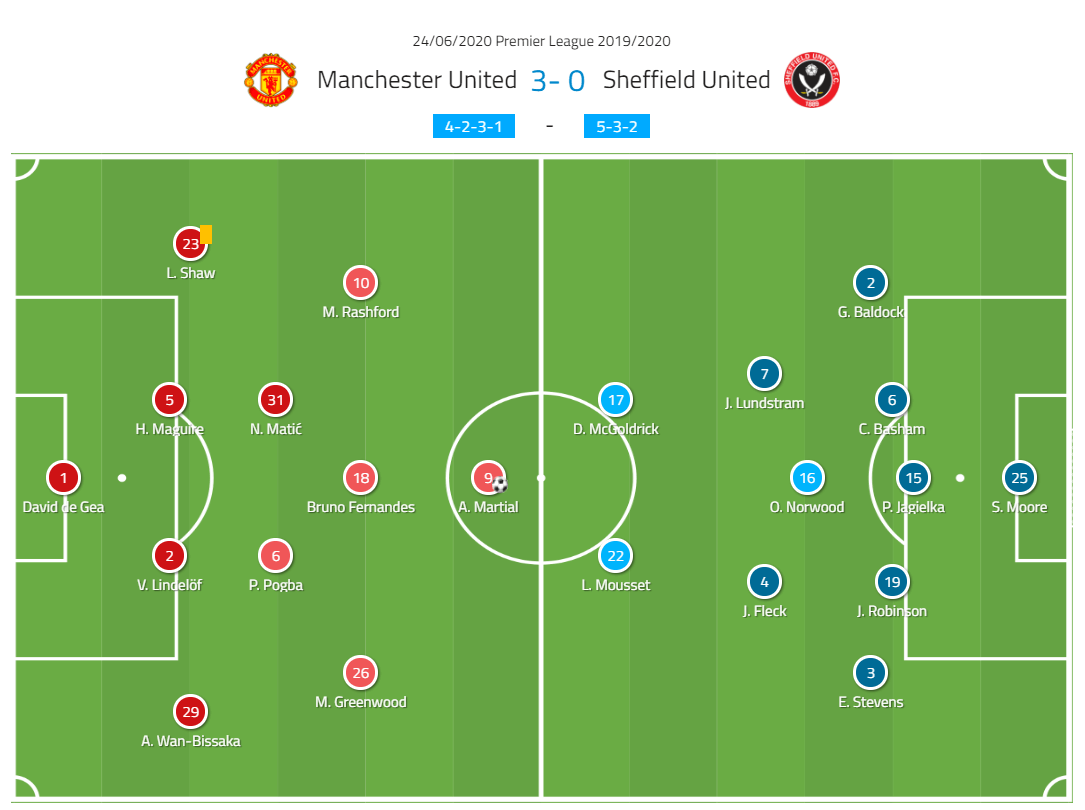
Ole Gunnar Solskjær chose the 4–2–3–1 shape for his team. David de Gea was supported by the duo of Victor Lindelöf and Harry Maguire in the heart of United’s defence. In the engine room, Paul Pogba and Bruno Fernandes made their long-awaited duet debut with Nemanja Matić supporting as a defensive midfielder. Upfront, talisman Martial led the frontline alongside Mason Greenwood and Marcus Rashford. Names like Juan Mata, Andreas Pereira, Daniel James, Odion Ighalo, and Scott McTominay had to start the game from the bench.
On the opposite side, Wilder set his team up in his preferred 5–3–2 shape. George Baldock and Enda Stevens started as the wing-back pairing. The midfield line was filled with John Lundstram, Oliver Norwood, and John Fleck. The duo of Lys Mousset and David McGoldrick was chosen to spearhead Sheffield’s attacking line. In their dugout, there were names like Sander Berge, Oliver McBurnie, and Richairo Živković.
Sheffield’s defensive tactics
In this part of the analysis, we’ll take a look at Sheffield’s defensive tactics. As expected, Wilder set his team up in a 5–3–2 shape when they didn’t have the ball. In the process, Sheffield deployed a medium defensive block and focused on closing the central lane. Even more specific, they used a five-man ‘cage’ to prevent Pogba from receiving the ball. The ‘cage’ was set by their midfielders and the forwards. The objective behind this was to force United to build their play through the flanks.
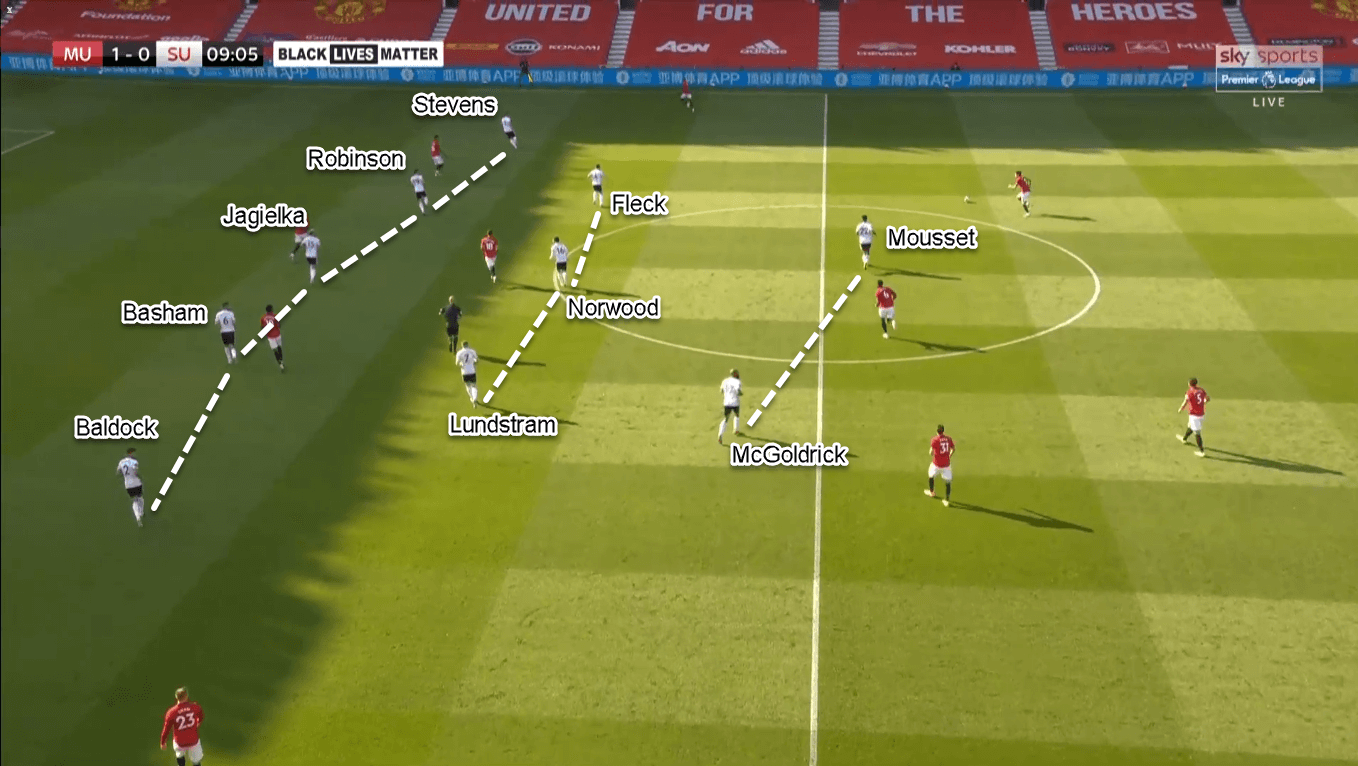
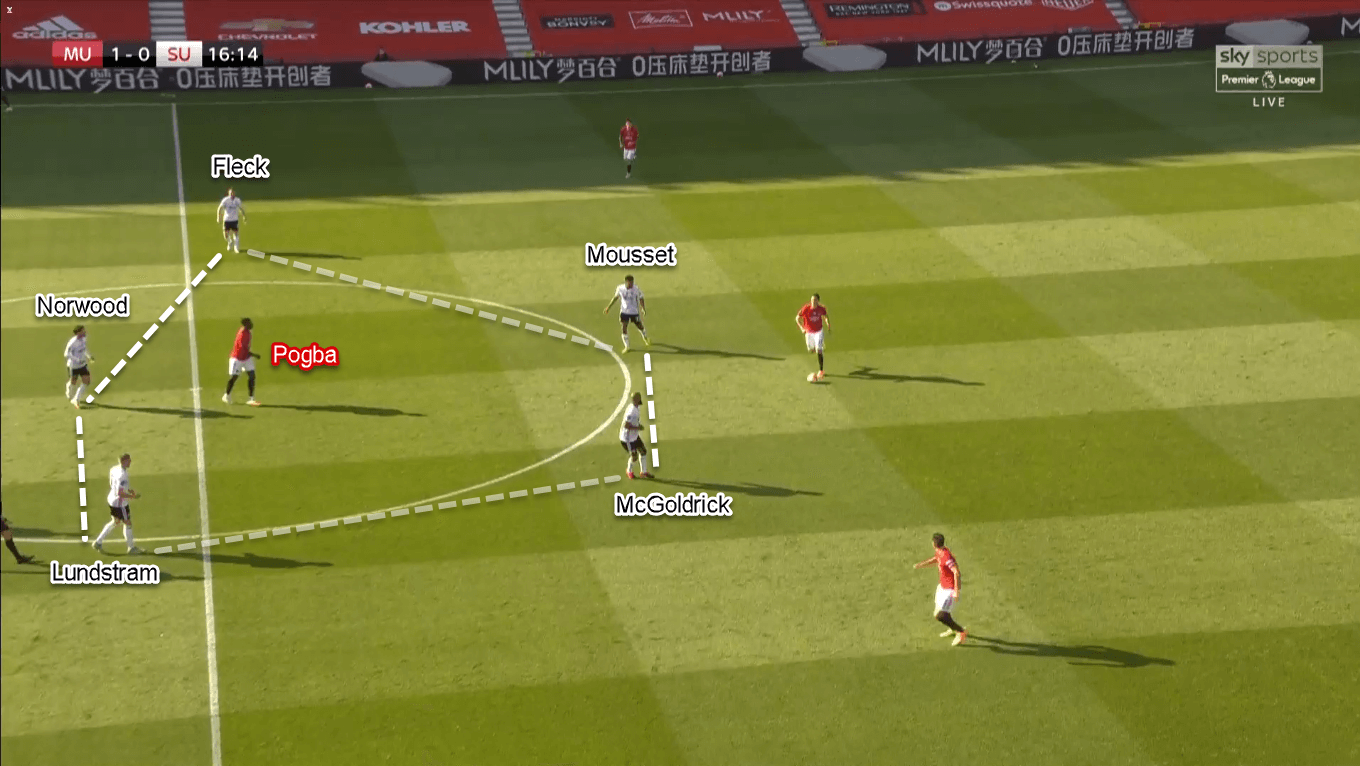
When United moved the ball to the flank, they would utilise their full-back to provide the width, and hopefully to progress the ball. However, Sheffield used an interesting tactic to nullify this. Instead of using their ball-side midfielder, Wilder asked his wing-back to step up and close down either Aaron Wan-Bissaka or Luke Shaw.
While the wing-back aggressively stepped up to press the on-ball United player, the remaining four defenders moved accordingly to provide cover. Why didn’t Sheffield use the ball-side midfielder to press? The answer was probably to reserve the midfielders’ energy. If they moved wide altogether, they would open a huge space on the opposite flank for United to switch the play. Moreover, if they allowed United to do that, the midfielders would need to chase the ball from one flank to another very often. Such a task would be too energy-consuming for a three-man midfield.
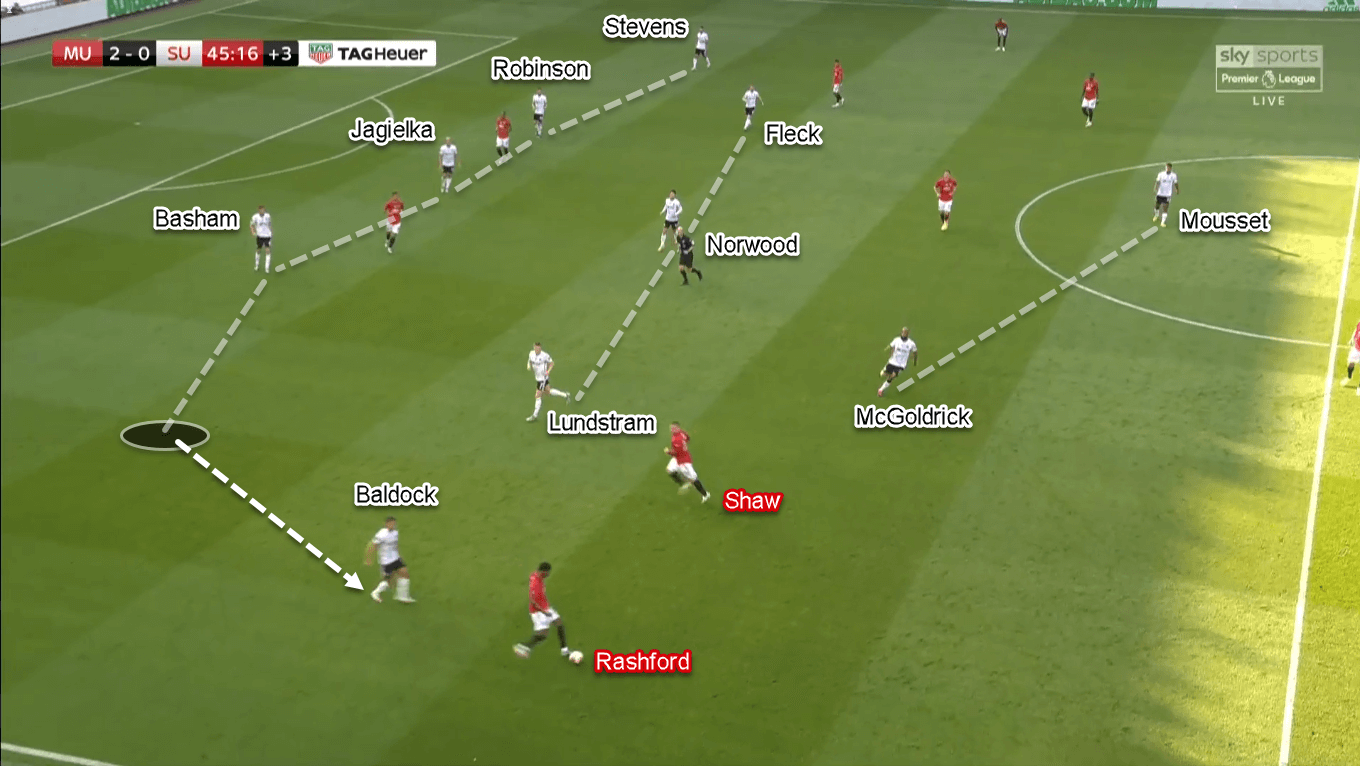
United’s attacking game (part one)
Offensively, United deployed a 3–4–3/3–1–6-ish shape on possession. Defensive midfielder Matić would drop in between or next to the centre-backs to make United overload the first line. Then, as mentioned before, the full-backs step up to provide width in a more advanced area. While Wan-Bissaka and Shaw have occupied the flanks, both Rashford and Greenwood tucked inside alongside Martial. The forwards were tasked to pin Sheffield’s backline as well as making runs in behind whenever possible.
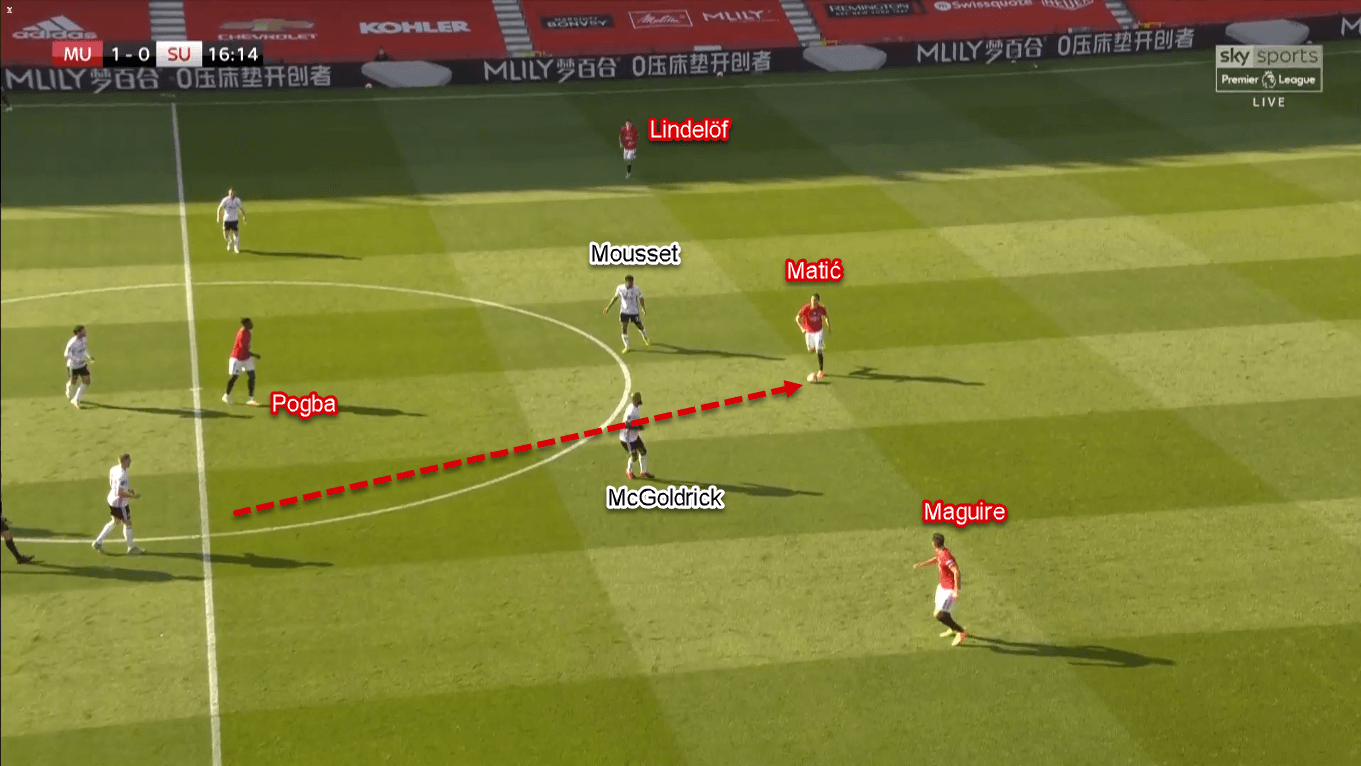
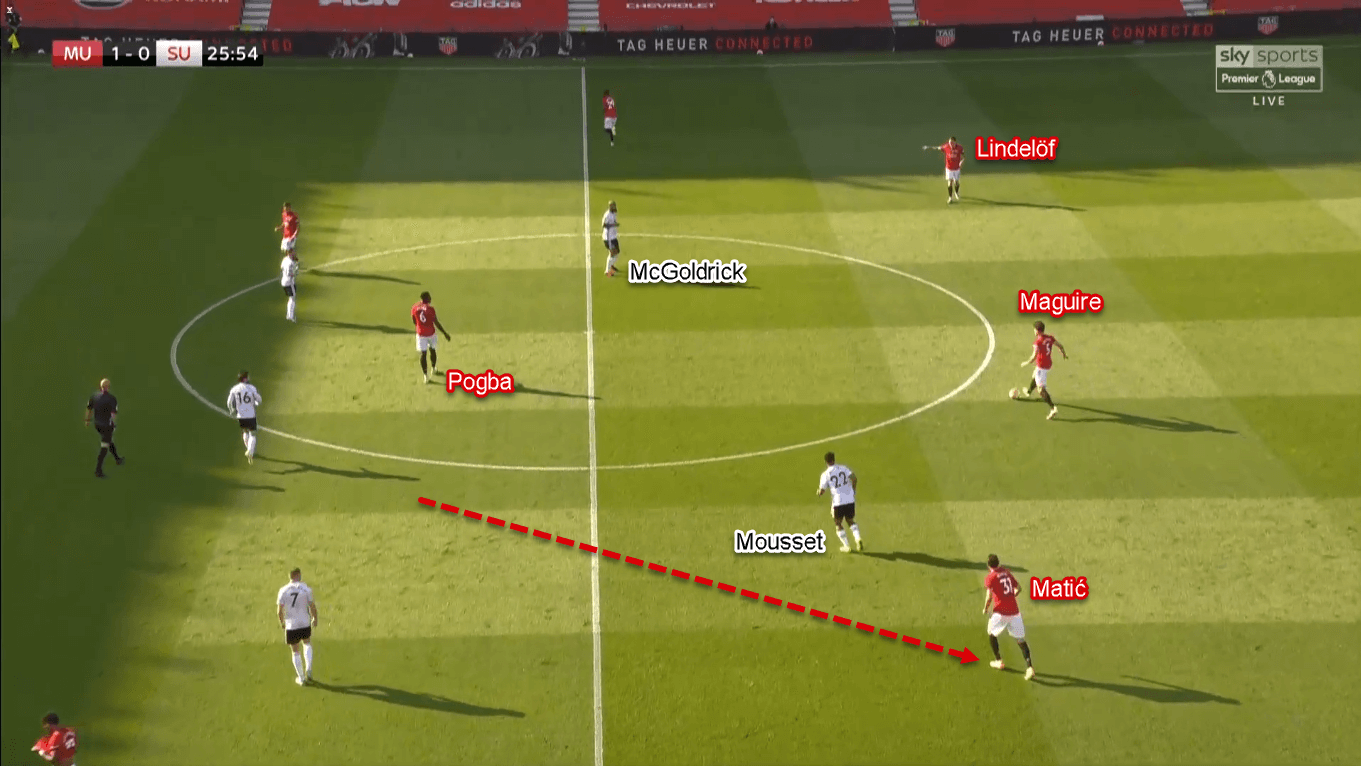
Different tasks then were given to both Pogba and Fernandes. The former was tasked to play centrally; bridging the makeshift defensive trio and the forward line. Meanwhile, the latter was given the freedom to roam. It means that Fernandes could be found playing in between the lines, dropping next to Pogba, and even making a run in behind Sheffield’s defensive line.
One of the reoccurring issues in Sheffield’s defensive shape was their lack of compactness, both vertically and horizontally. Indeed they successfully closed down Pogba on some occasions, but at the same time they opened a clear forward passing lane for Matić to find the attackers; mostly Fernandes.
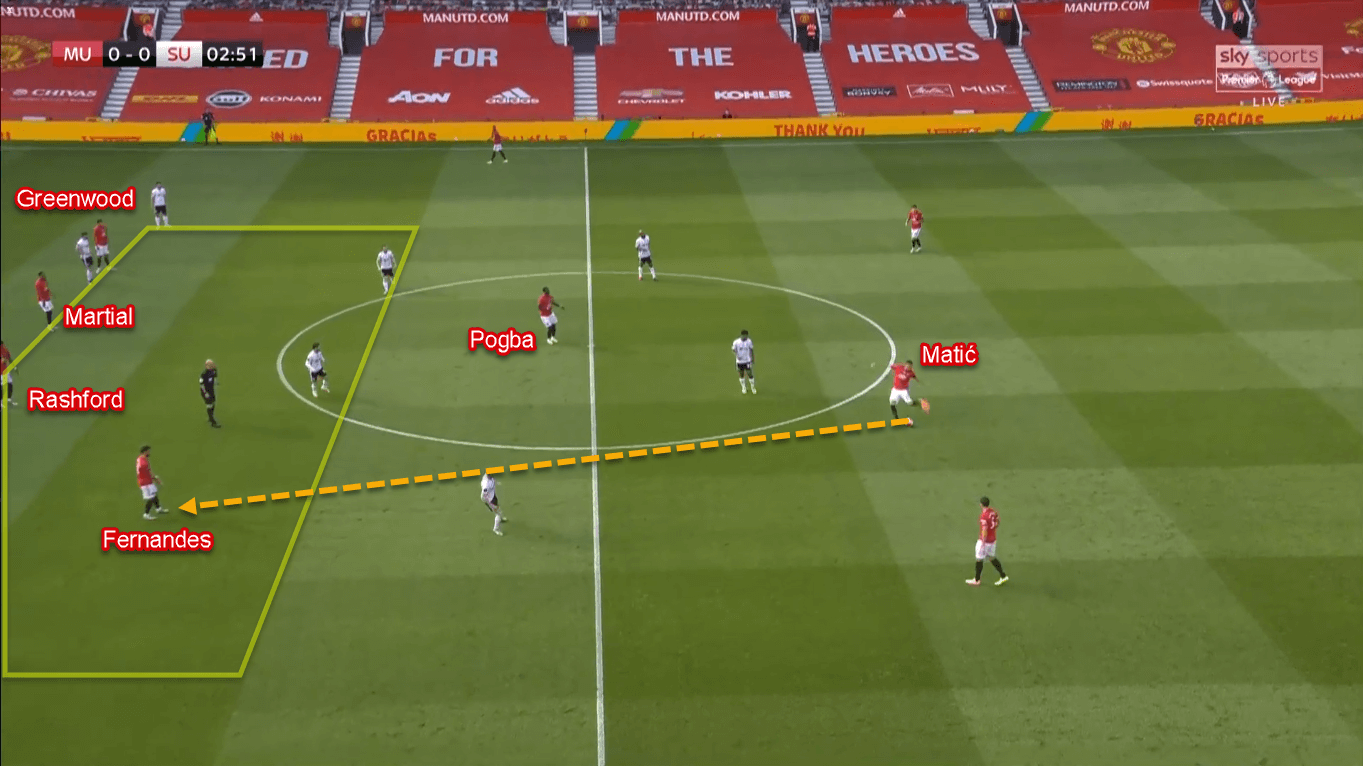
Fernandes was able to receive in between the lines because of two things. Firstly, it was because the five men up front were not horizontally compact. This would give enough space for Matić to make a forward pass to his attacking comrades. Secondly, the backline was pinned down by United’s attackers. In the process, Greenwood, Martial, and/or Rashford were able to give Fernandes enough space to roam in between the lines.
United’s attacking game (part two)
With five men in their backline, Sheffield had a numerical advantage to prevent United from exploiting the space. They would ask the nearest centre-back to step up, follow the United man in between the lines, and close him down immediately. Lucky for United, they have players who are very good at making one-touch flicks; even when facing their own goal. This helped United to combine easily in between the lines.
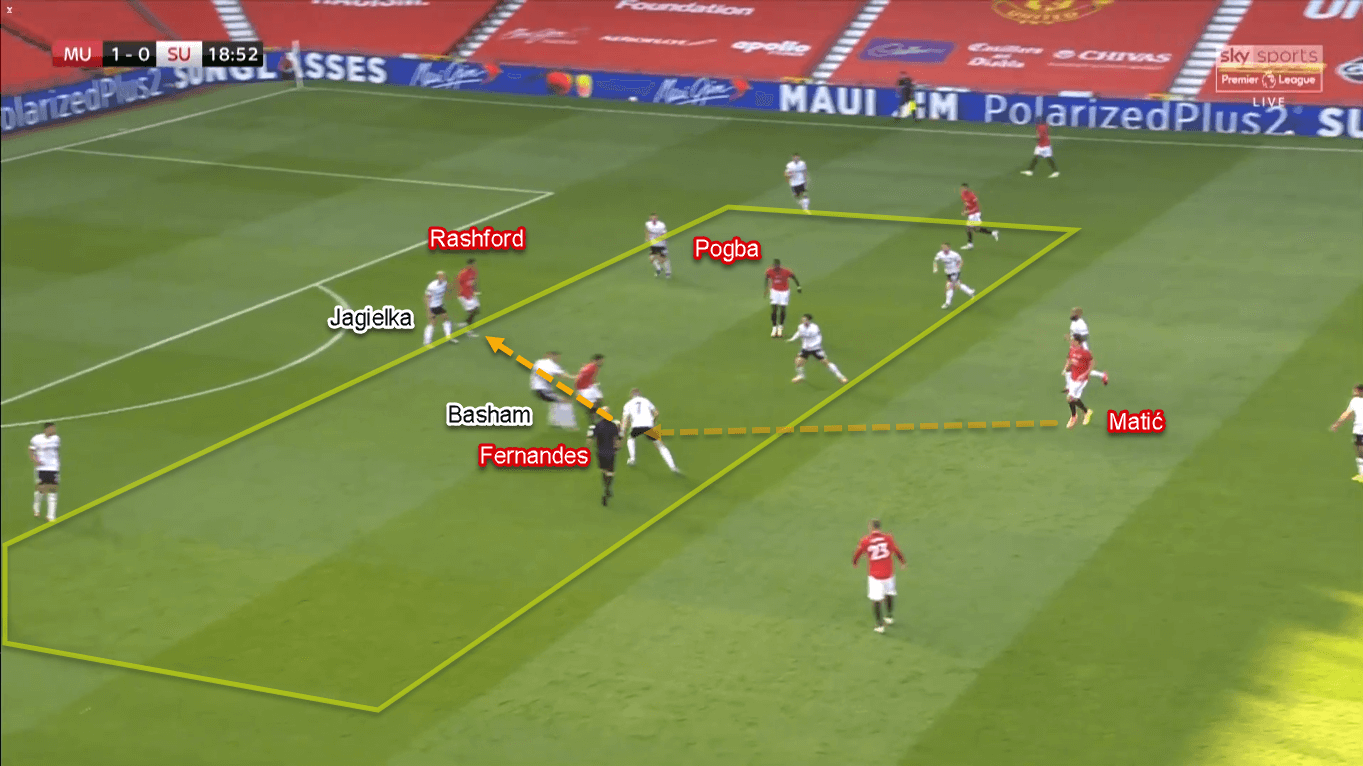
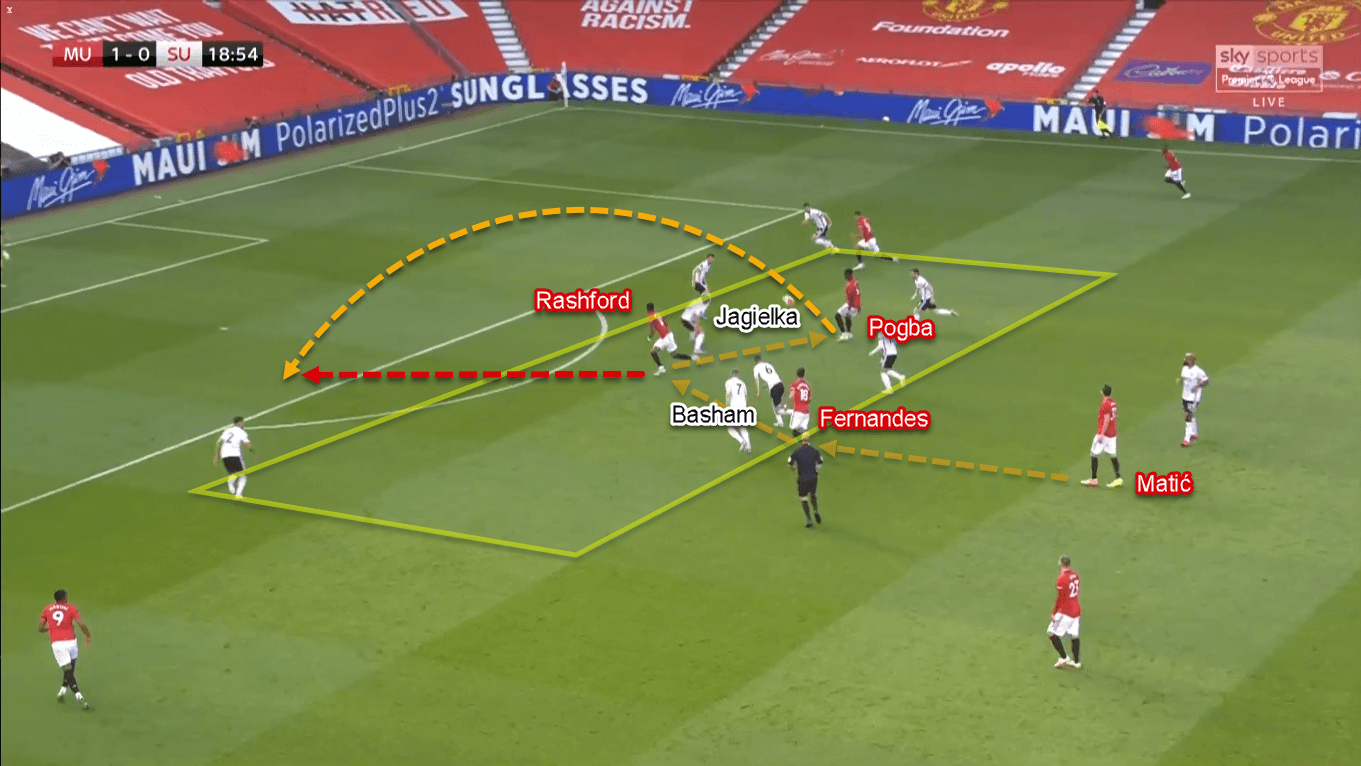
As one centre-back stepping up to close the man in red, this would open space in Sheffield’s backline. That space then could be attacked by another United’s attacker(s) to make a run in behind. For a fact, this interesting tactic (and its variation) was the reason behind United’s first and third goal.
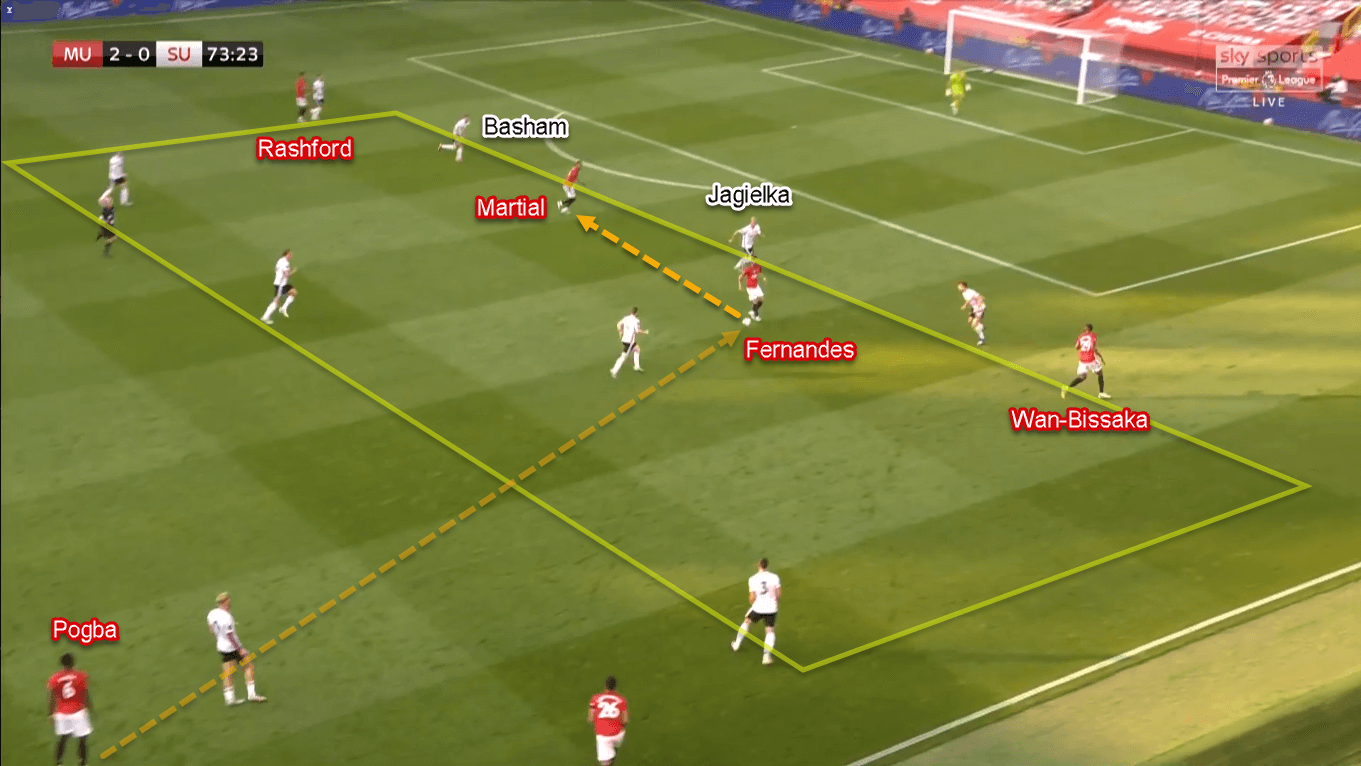
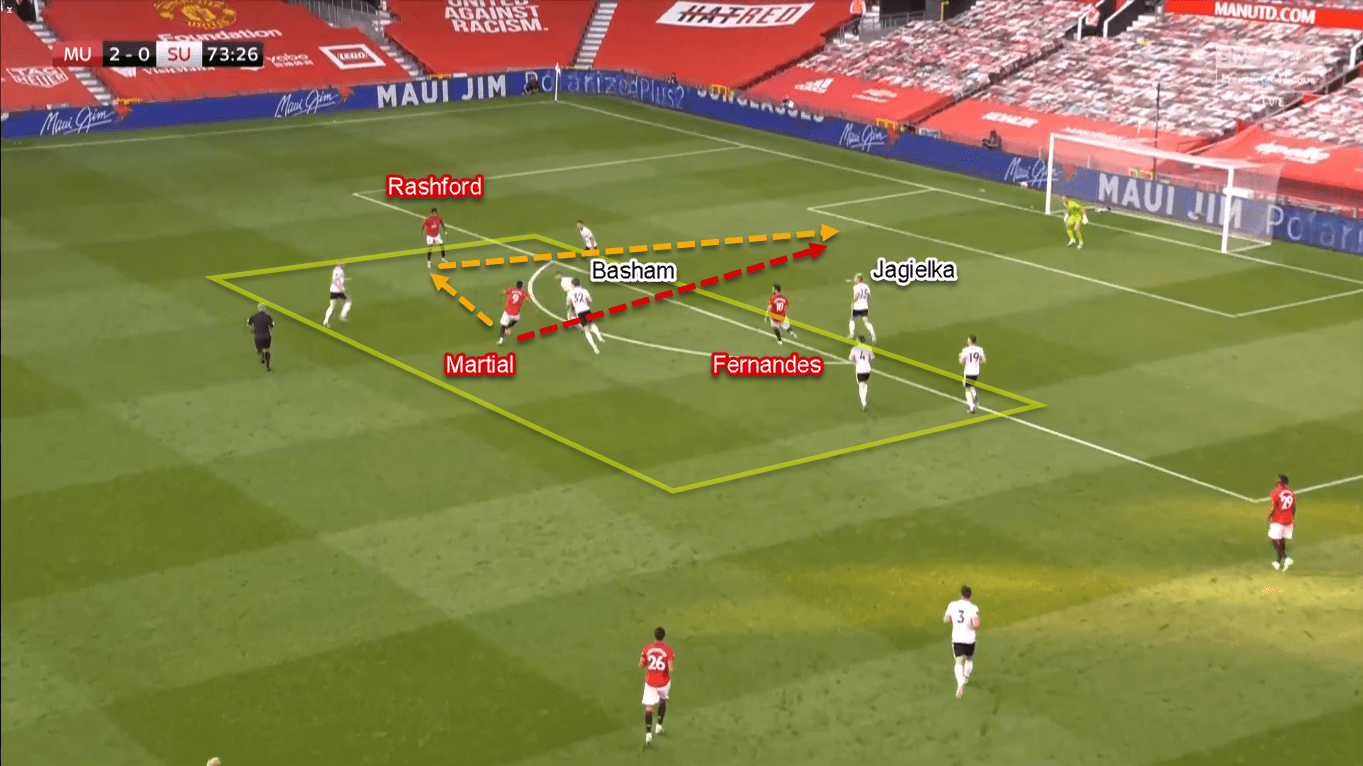
If United could not penetrate centrally, they would happily move the ball to the flank. Sometimes, either Pogba or Matić could be found drifting wide and play out of Sheffield’s aforementioned ‘cage’. By doing so, they had fewer opponents to face rather than playing centrally. Again, the objective stays the same: find a free teammate in between the lines and let him initiate a smart combination.
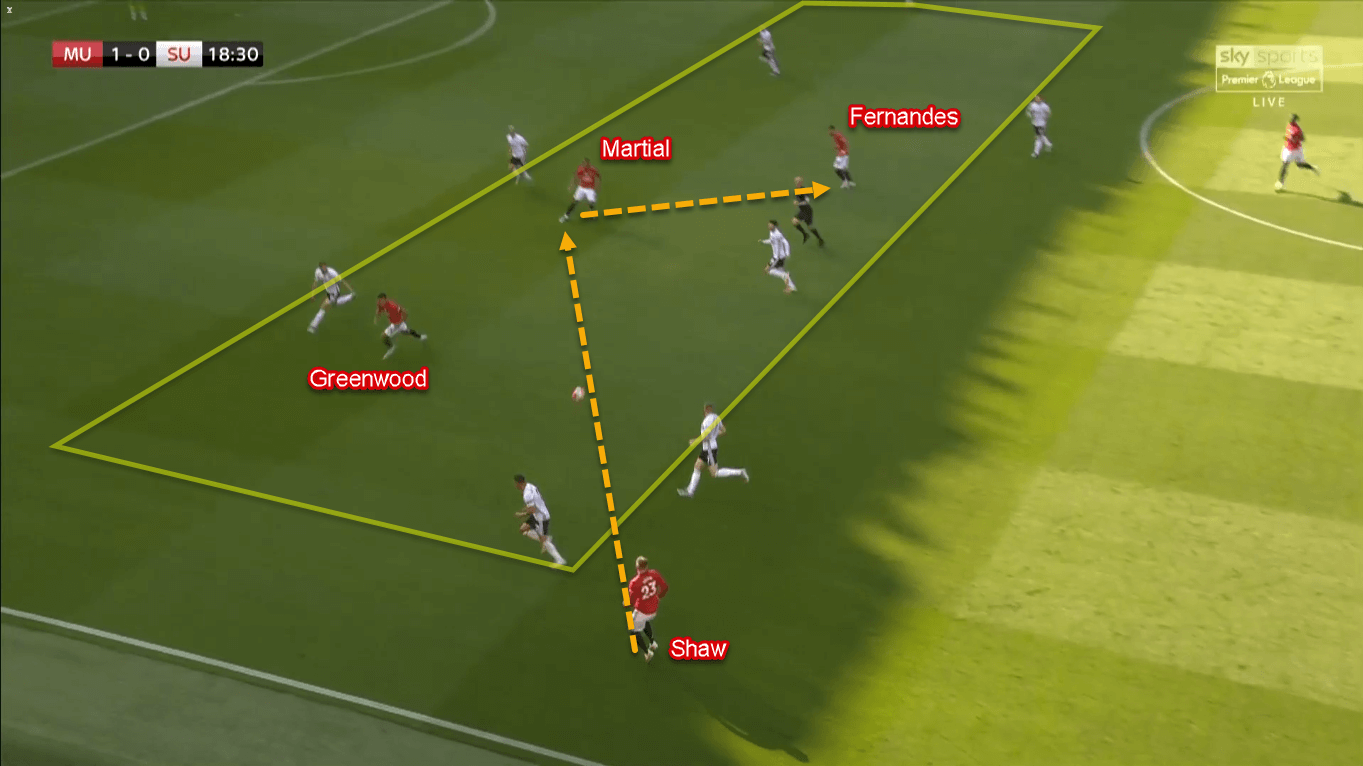
The blunted Blades (part one)
United were able to prevent Sheffield from building their play from the back. The reason was their use of a medium-high 4–2–1–3 press. In the process, United could match the number of Sheffield’s backline and prevent Simon Moore from playing the ball short. The goalkeeper then was forced to send out ineffective long balls upfront. Per the statistics, he only made seven (53.84%) successful direct passes to the Blades’ attackers.
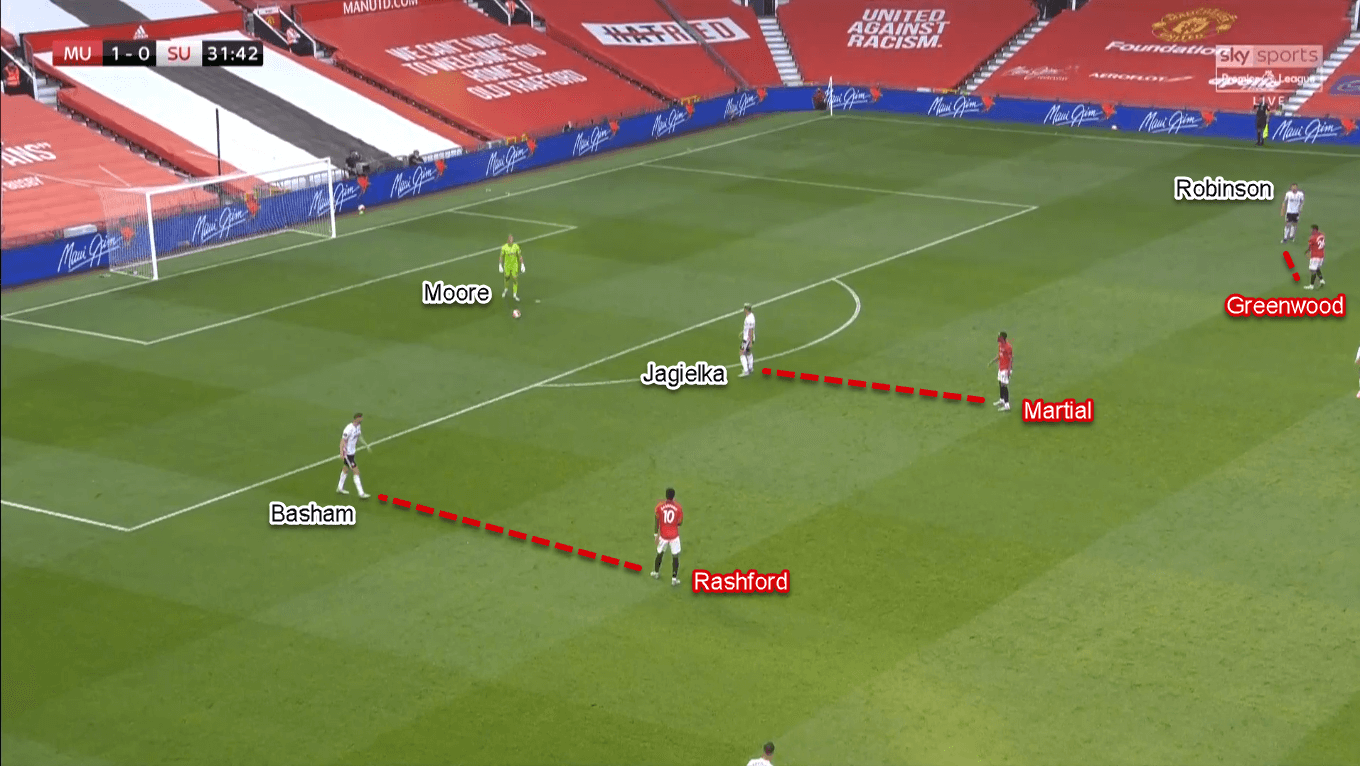
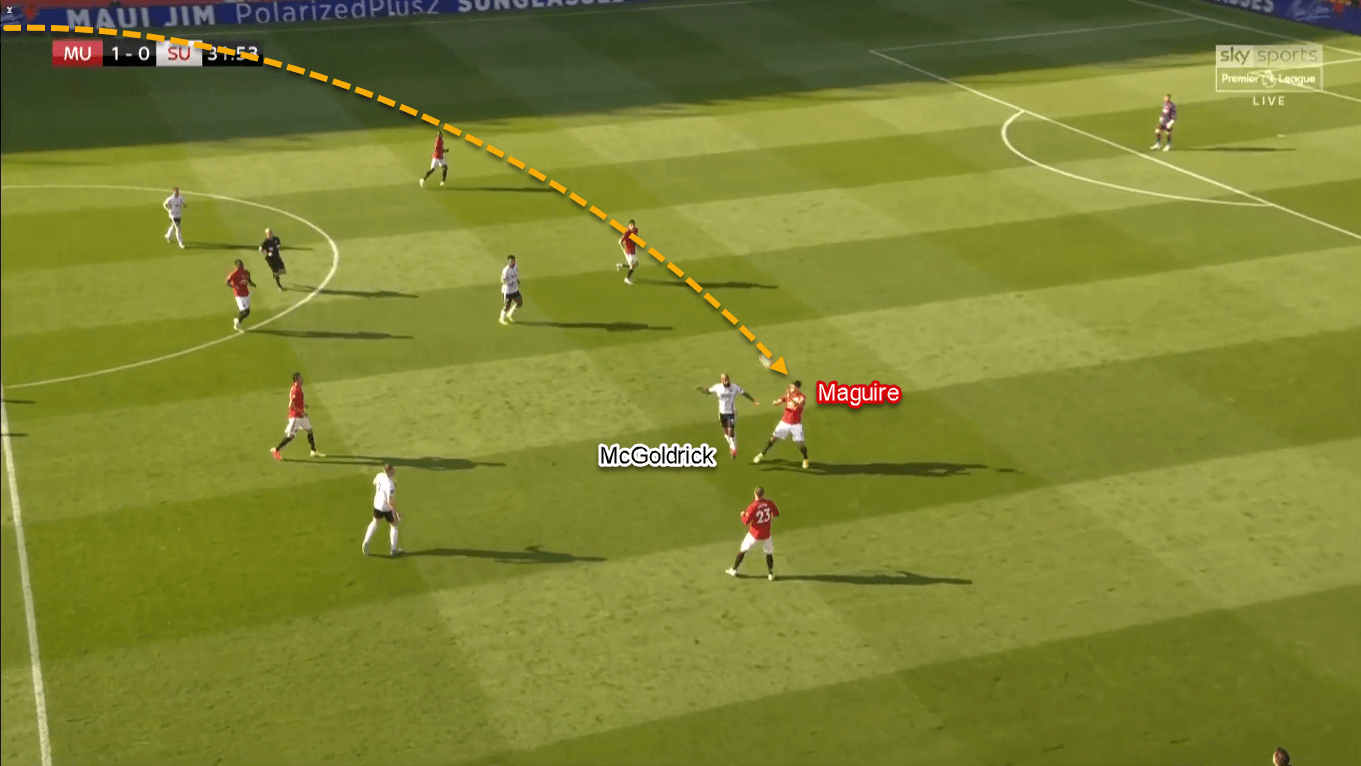
When having the possession, Sheffield would try to flood the flank area. They would even use up to four players in the process; using the famous ‘overlapping centre-back’ tactic at times. The other players involved include the ball-side midfielder and wing-back, as well as the nearest striker and/or the central midfielder. Their objective was to free one player to send crosses into the box. However, the stats show that both Baldock and Stevens only combined for four (50%) successful crosses.
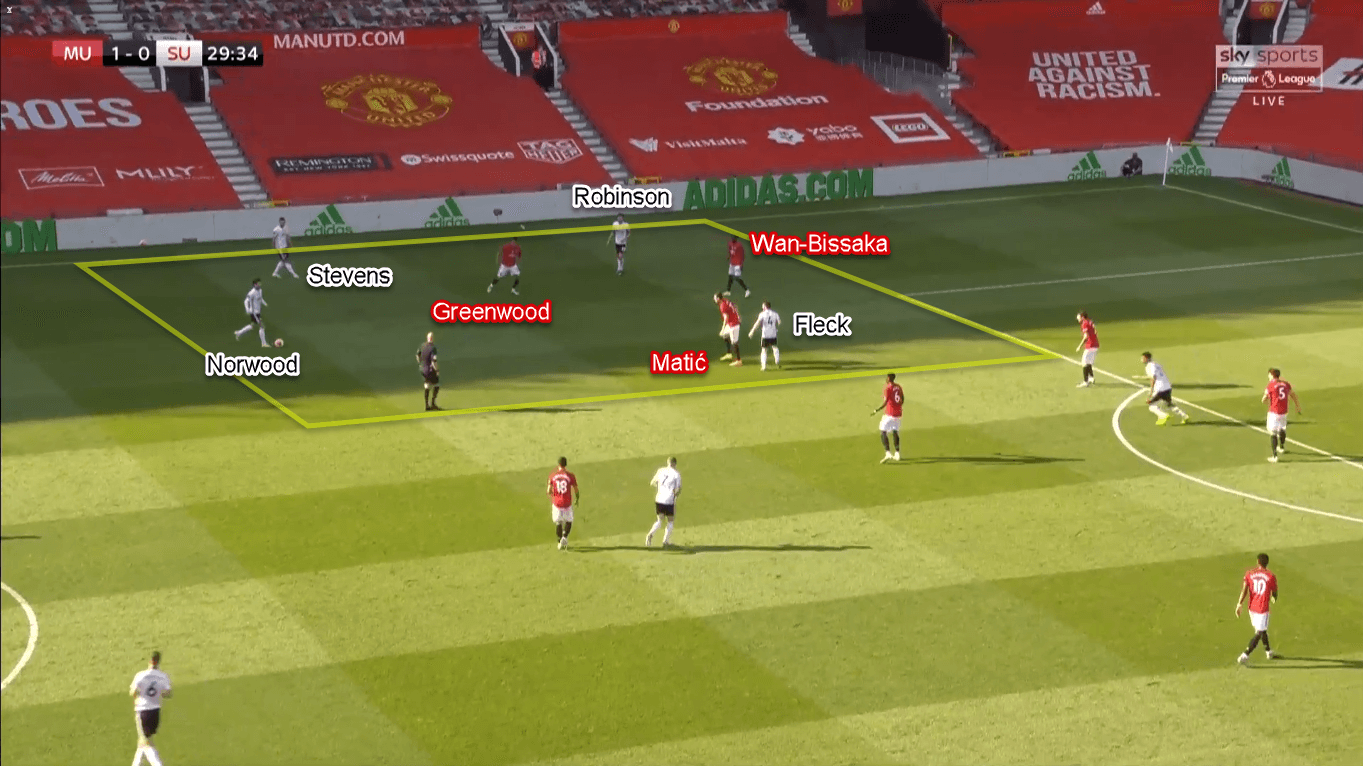
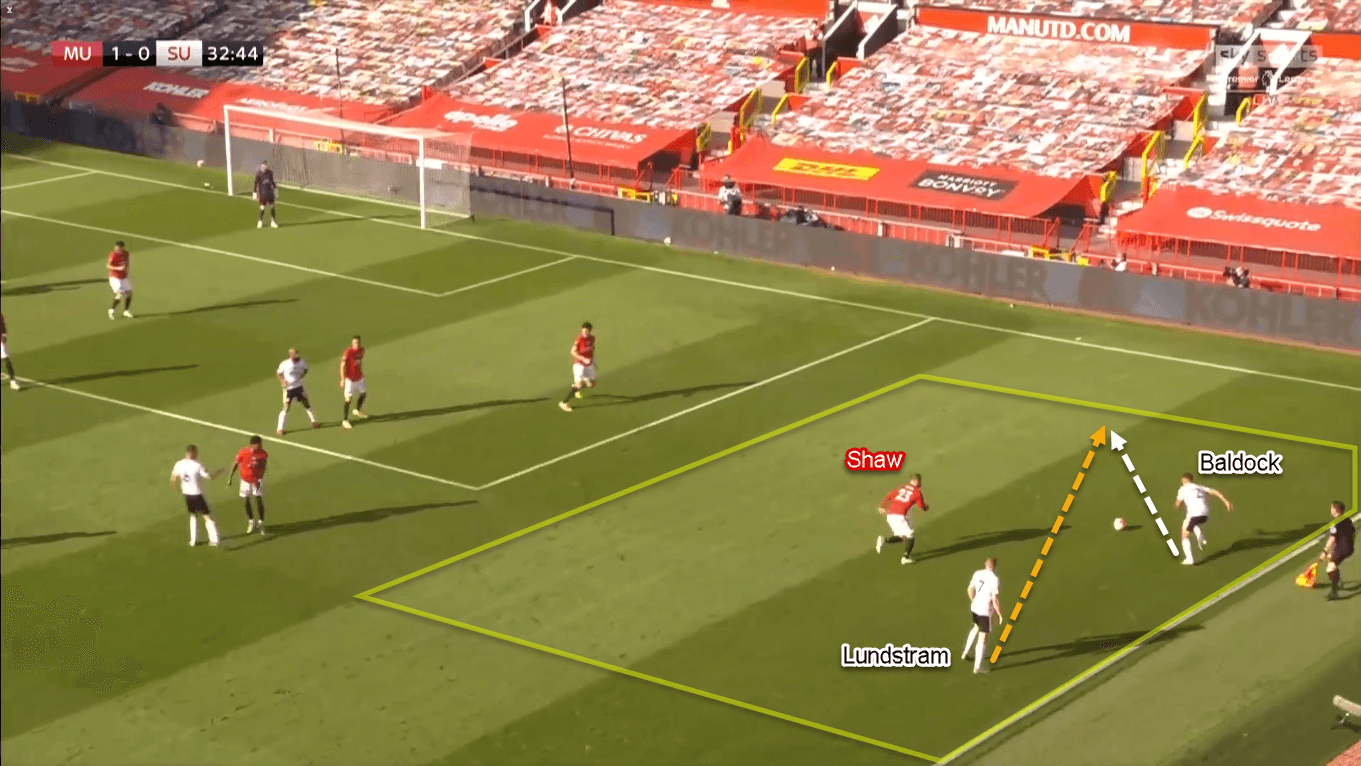
The blunted Blades (part two)
The home side was able to shut down Sheffield’s flank-overload on many occasions. In the process, United would try to match the number of men in white on the flank. Alongside the ball-side midfielder, winger, and full-back, United could also utilise the nearest centre-back or their attacking midfielder to join the press. Another reason why The Blades were blunted was that they were too slow in making the flank combinations. Sometimes it allowed United to match the number of men in white before they could even pose a threat.
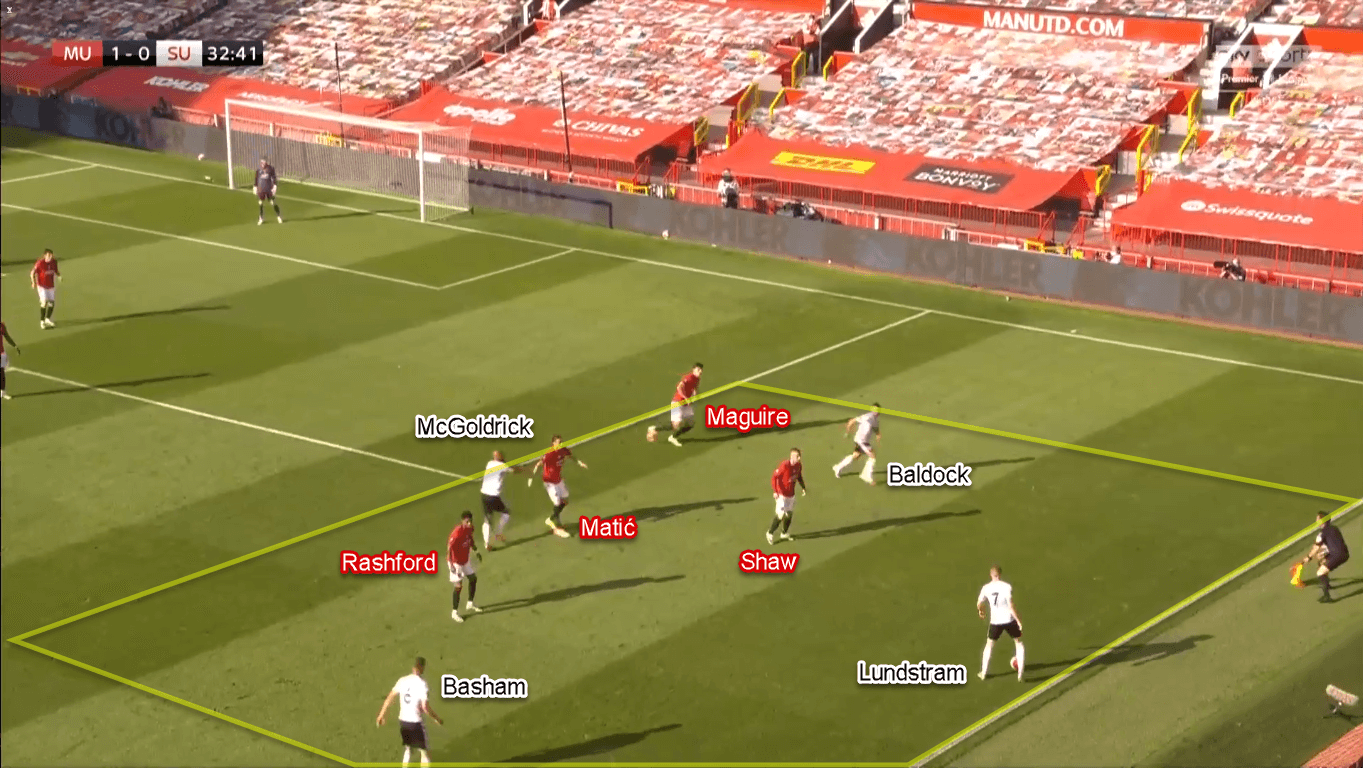
If Sheffield couldn’t find a way through one flank, they would immediately switch the ball to the opposite side. When this happened, the receiver — the far-side wing-back — would be positioned in a one-versus-one duel against United’s full-back. Then, either Baldock or Stevens could send crosses into the box without needing to make an overload like before. Again, their lack of crossing quality let their team down.
United in transition
United has become a monster in counter-attacks under Solskjær’s management. This season, they already have five goals via transitional attacks; joint-fourth highest in the league. The number could even add up to six if Rashford didn’t miss the big chance in the 13th minute.
The Red Devils’ threat in transition started from Sheffield’s naivety. When they attacked, sometimes they would use the ‘overlapping centre-back’ tactic. Even worse, the defensive midfielder Norwood would also join the attack on some occasions; making them overcommit players in possession. This is why Sheffield would only have two defenders at the back; the remaining centre-backs.
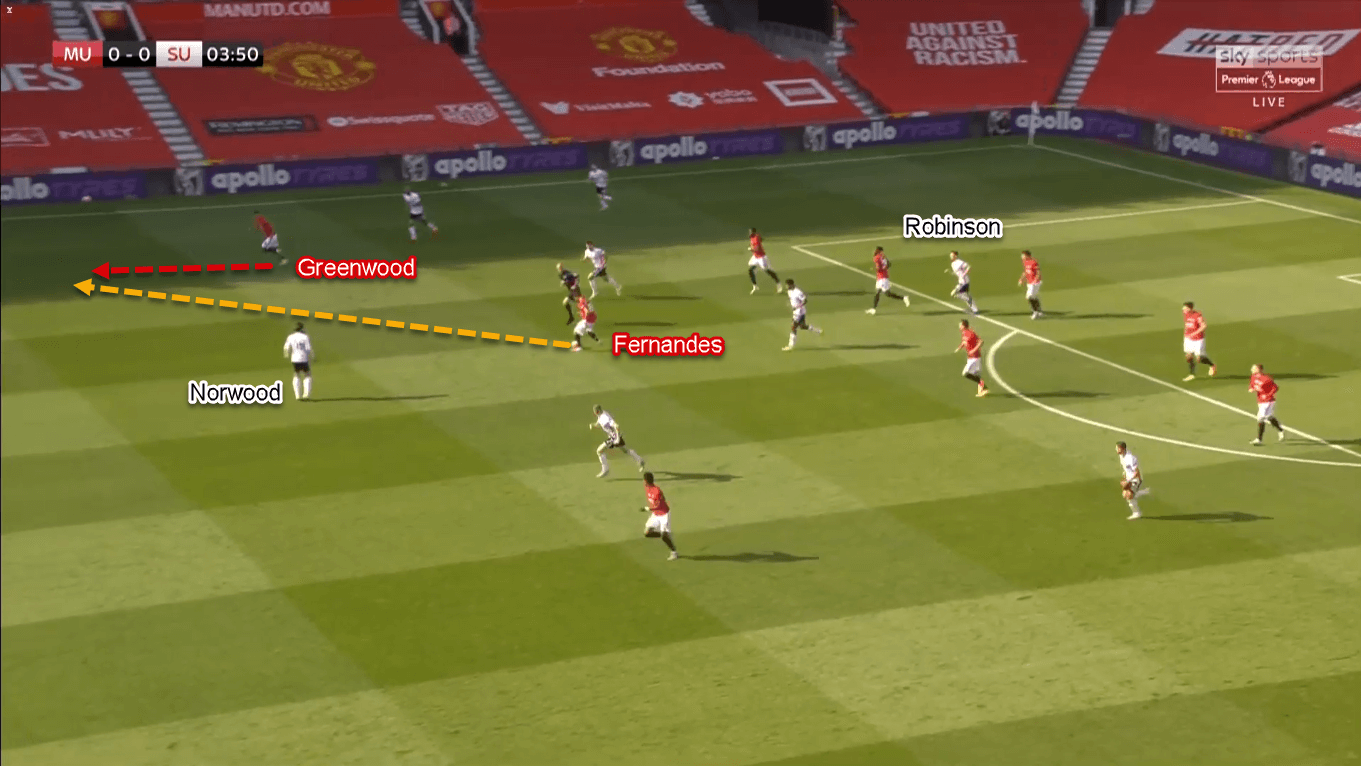
Norwood’s advanced positioning had a particular reason. He was tasked to be close enough to Fernandes, as the Portuguese was United’s main distributor in their counter-attacks. But, the plan seemed too risky. Norwood allowed Fernandes a lot of space in counter-attacks. This is probably why he was subbed out for Berge at half-time.
In their counter-attacks, United utilise their forward smartly. Upfront, Martial pinned Sheffield’s remaining centre-backs. By doing so, he could be in parallel with them and had the advantage in a footrace. Another forward utilised in United’s counter-attacks was the ball-side winger. The winger — upon receiving from Fernandes or deeper players — was tasked to carry the ball forward. After that, he could find Martial in behind with a sharp through-ball.
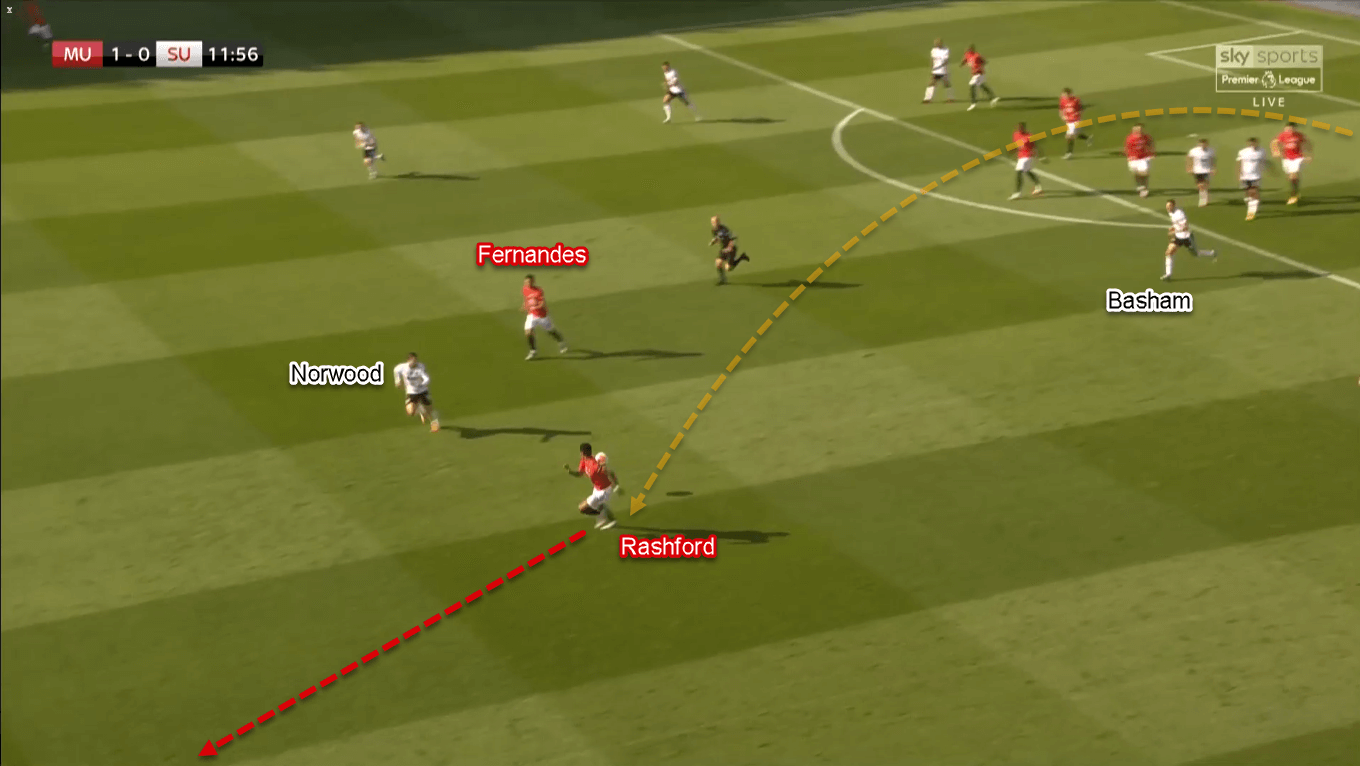
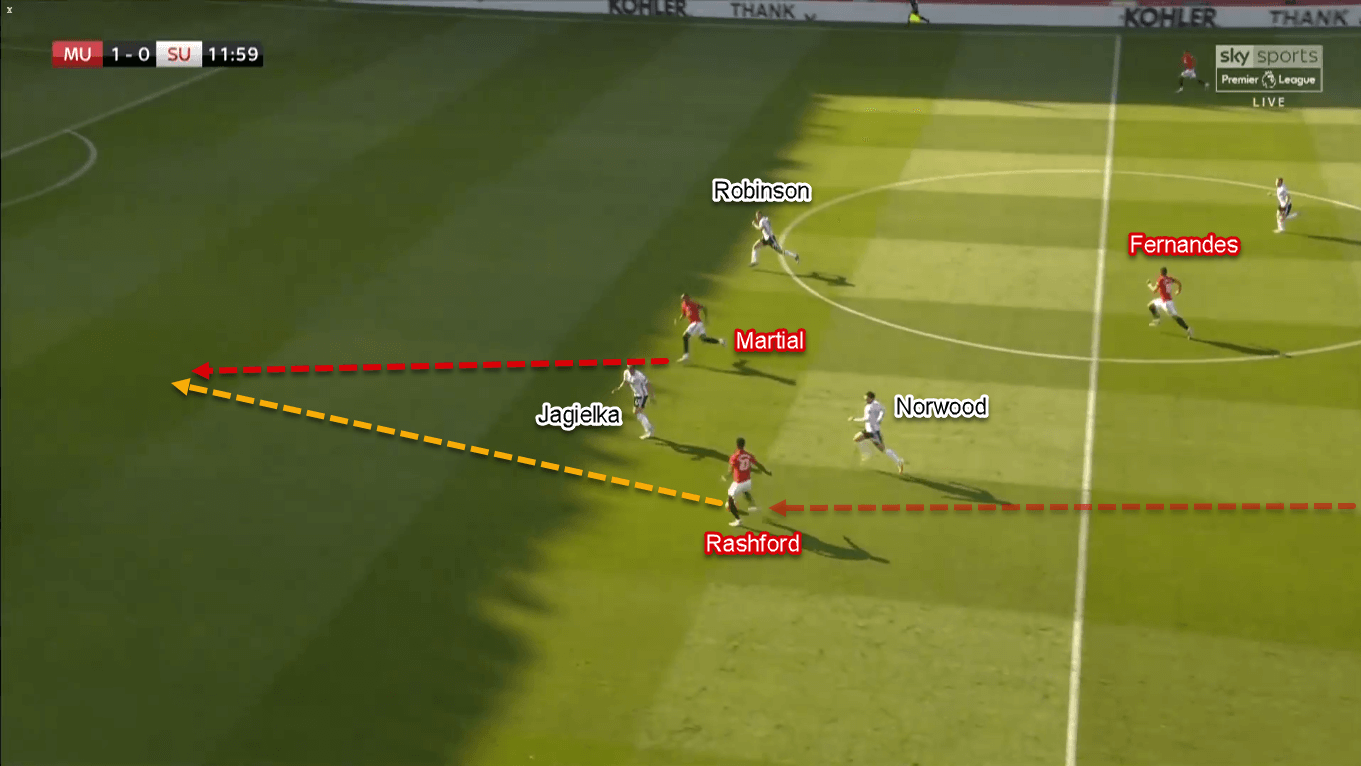
Conclusion
The match was one-way traffic, unlike the dramatic 3–3 draw in their first meeting in November. The reason was Wilder’s lack of tactical adjustments in the second half. To put that from a statistical perspective, United only managed to make 60% of ball possession in the first half. The stats rose in the latter half, with United never having lesser than 73% possession after the break. At one time, this number even touched 80%; further underlining United’s dominance.
If we look at the expected goals (xG) tally, United also dominated with 2.31 xG, meanwhile, Sheffield came home with a low 0.20 xG. Some may say this happened because of the Pogba-Fernandes partnership. But, we must not forget Matić’s important role to support them. Should Solskjær continue this tactical brilliance, United may be able to challenge for a Champions League ticket in the upcoming months. Let’s wait and see.





Comments